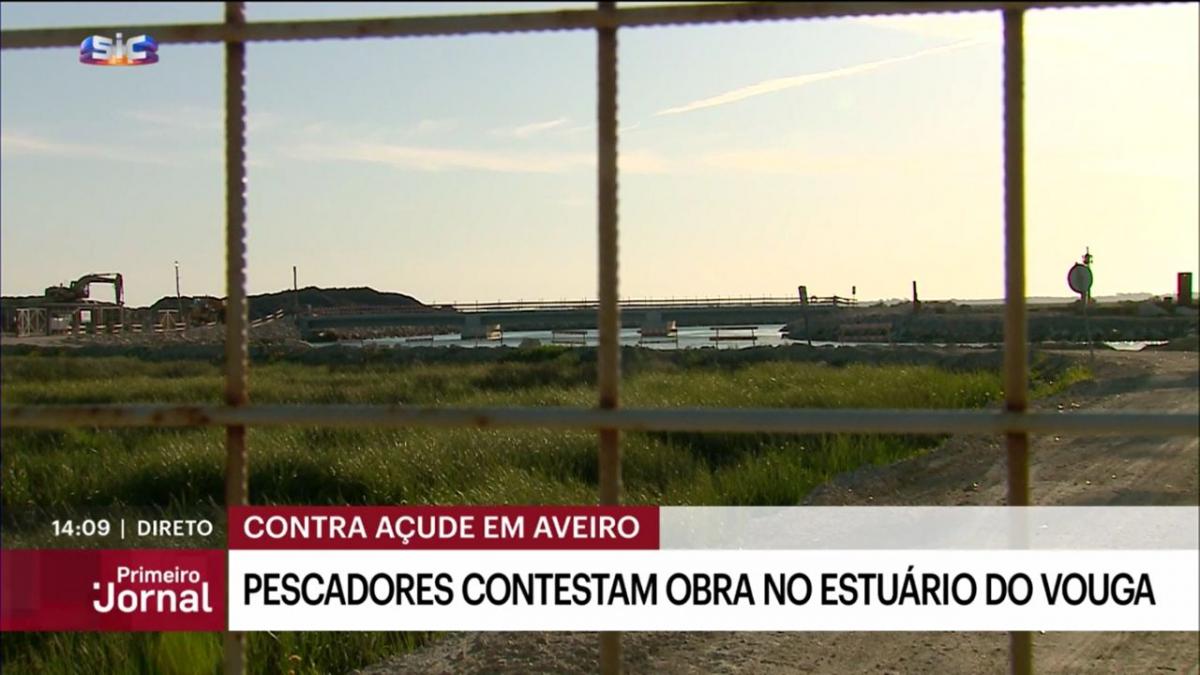Pedro R. Almeida in Primeiro Jornal - Fishermen and environmentalists contest the construction of the weir-bridge in Aveiro
Talked about for almost two years, the work that will lead to the bridge-weir of the Rio Novo do Príncipe began in June last year. The aim of the construction is to prevent salt water from the Ria de Aveiro from invading the agricultural fields of the lower Vouga lagoon. At stake are species such as the eel, shad and lamprey, and the livelihood of the fishermen who fish for them.

In an interview with SIC, MARE's director and researcher Pedro Raposo de Almeida explains that the construction, by blocking these waters, “will prevent the access of diadromous migratory species to the breeding areas that we have been restoring. This could mean the disappearance of these species in the Vouga”.
Since 2018, the Life Águeda project, in which MARE is involved, has been dedicated to restoring the habitat of various fish species, intervening in this region. This project, with European funding of 3.3 million euros, is at risk with the construction of the weir bridge. “[The European Commission] certainly won't be satisfied with the solution we've come up with if an efficient fish passage isn't built,” said Pedro R. Almeida.
CIRA - Comunidade Intermunicipal da Região de Aveiro, which is responsible for the work, guarantees that the hydraulic operation of the floodgates will respect the migration periods of the species, and that they will be opened when necessary. In addition, the Portuguese Environment Agency says that it intends to carry out a study, which must be submitted within six months of the weir's completion.
Fishermen and environmentalists are unhappy with these measures: “Why did we go ahead with the work, and now we're told that 6 months before the work is finished, a work that takes 2 years to complete and costs 11 million euros, we're going to present a study, which will demonstrate or not that the fish will return [to the River Vouga]”, asks Pedro R. Almeida. He is therefore calling for a new, updated study to be carried out to replace the 2003 study that gave the go-ahead for the work, and for the project to be reworked to include a fish passage, in order to guarantee the conservation of migratory species.
To see the interview click HERE
